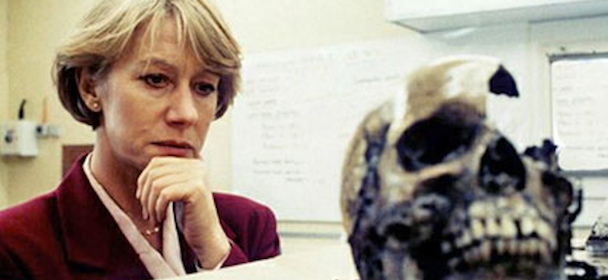Prime Suspect
Series 2
Original airdate: December 15 and 16, 1992
One of the key distinctions between American and British television models, aside from their cultural sensibilities and humor styles, lies in their approach to airing TV series.
While American broadcast and cable networks typically adhere to the 13 or 22-episode season format, with consistent annual premieres, some of the most highly regarded British series, such as Doctor Who, Luther, and Sherlock, have taken a more irregular approach.
This means that episodes may air in a less predictable order, sometimes with several months or even years between serials.
It may appear somewhat unpredictable, but it also grants them greater flexibility, allowing them to schedule based on actor availability and the creative inspiration of the writing team.
Similarly, just as Prime Suspect meticulously delved into the intricacies of a murder investigation, Lynda La Plante and her team exhibited patience in revisiting the character of Jane Tennison.
The second series of Prime Suspect aired over twenty months after the conclusion of the first installment.
A return was virtually inevitable, considering the show’s immediate critical acclaim, which resulted in numerous award nominations and secured four BAFTA TV Awards.
Among these accolades were Best TV Actress for Helen Mirren and Best Drama Serial for La Plante and her fellow showrunners.
The first series concluded with Tennison reaching the zenith of her career, having initially faced the challenge of earning professional respect. This newfound dynamic offered an exciting opportunity for a fresh case to exploit.
Indeed, they capitalize on this opportunity in the second series of Prime Suspect, living up to the potential established by the original while carving out its unique narrative territory.
While the first series delved deeply into psychological elements, the second series adopts a more straightforward procedural approach.
It unfolds as a story where the fundamental structure of the mystery could easily be adapted into an episode of shows like Law and Order, NCIS, or Cold Case.
While this shift may slightly diminish its craftsmanship, it also renders the story more accessible. Importantly, it preserves nearly all the elements that made the first installment successful.
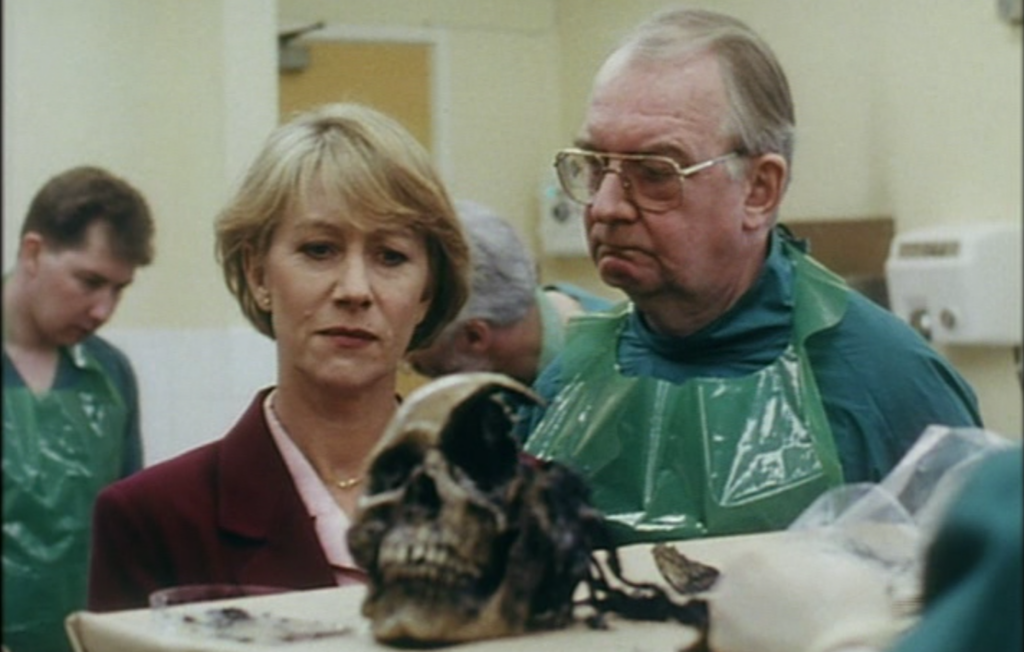
Prime Suspect 2 seamlessly picks up where the first series left off, with just over a year passing since the successful conclusion of the George Marlow case.
During this time, Tennison has garnered the respect of both her department and the entire police force due to her tenacious yet unconventional investigative methods.
The story unfolds when the skeletal remains of a teenage girl are discovered in a backyard, providing precious little evidence to work with.
Detective Superintendent Kernan, Tennison’s commanding officer, assigns her team to the case with a strong emphasis on attention to detail and the utmost discretion, especially considering the sensitive nature of the investigation.
The grim discovery takes place in an Afro-Caribbean neighborhood that has a strained history with the police, including the still-unsolved disappearance of Simone Cameron, a girl who shares several identifying characteristics with the deceased.
The reason why I find the second case to be somewhat less revolutionary than the first boils down to a matter of structure. In the initial Prime Suspect, the narrative splits its focus between the lives of both Tennison and Marlow.
This narrative choice allowed viewers to witness the psychological toll the investigation took on both sides, consistently raising doubts about whether the police were on the right track.
In contrast, in this second installment, the primary suspect, David Harvey—an elderly man who previously rented the property where the body was discovered—is only shown in the context of Tennison’s interrogation.
There are no glimpses into how he copes once she departs. While he remains a point of interest throughout the investigation, the intensity of scrutiny on him is not as pronounced as it was for Marlow in the first series.
Read More: Review: Prime Suspect, Series 1, Part 2
Here, our attention is spread across a broader spectrum of suspects and potential motivations, shifting the narrative from a more tightly focused “did he do it?” to the open-ended question of “whodunit.”
However, characterizing it as a more conventional procedure doesn’t diminish the fact that it still stands as a highly effective example of this format. La Plante’s storytelling and Allan Cubitt’s teleplay skillfully maintain the tension and intricacy of the mystery.
The identification and elimination of suspects unfold in a logical and methodical manner, highlighted by Tennison’s clever move of swapping her watch with the victims to rule out Simone Cameron as a potential suspect.
The series also incorporates vital elements of forensic investigation*, with a pair of African bracelets and a distinctive belt buckle emerging as pivotal clues in both identifying the victim and unveiling the identity of the murderer.
Once again, there are no gunshots or dramatic confrontations involving firearms throughout the entire series.
Instead, the excitement stems from the intensity of the interrogation scenes, notably Harvey’s confession on his deathbed and the race against time as Tennison’s team strives to apprehend the perpetrator.
While the show’s atmosphere may have been slightly dialed down compared to the first series, it still maintains a powerful ambiance, thanks to the grittier cinematography style and the enveloping musical score by Stephen Warbeck.
*Speaking to Prime Suspect’s role as a template for contemporary cop shows, the concept of constructing a face from the skull alone would become a staple of forensic-centered procedurals like Bones and NCIS*, with computer generation replacing the clay bust.
**I noticed this in the first series, and it could just be the accent, but the attitude of the lead medical examiner with the body and assistants has more than a passing similarity to Ducky from NCIS.
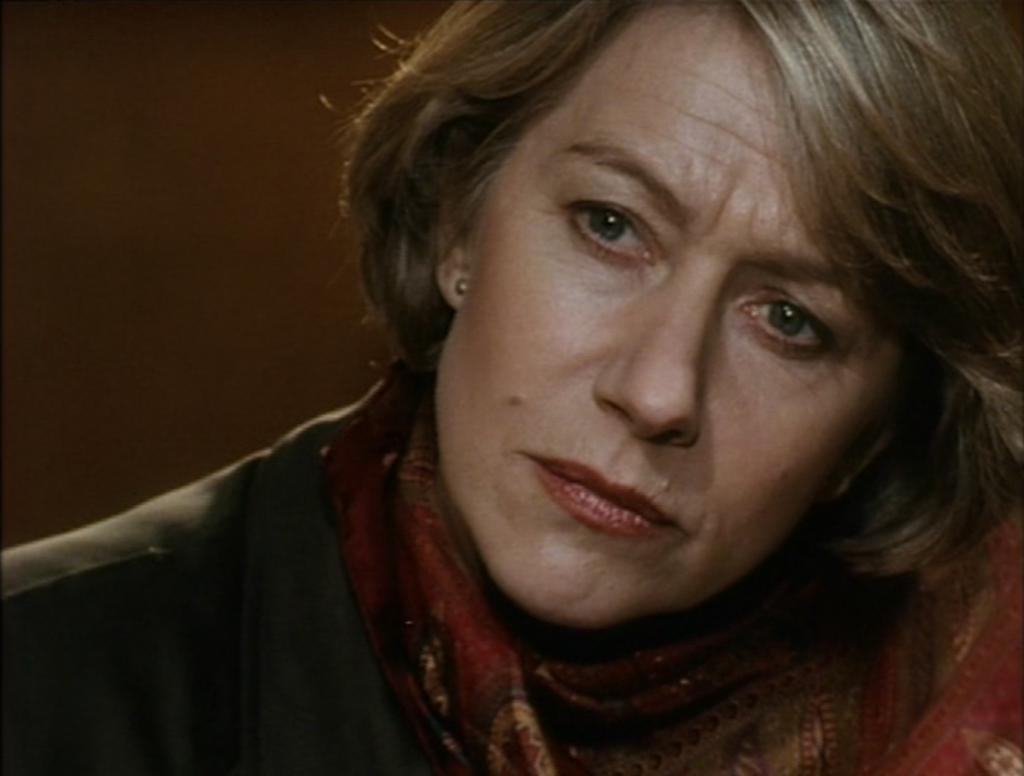
Indeed, the series revolves around the character of DCI Tennison, and once again, Helen Mirren delivers an exceptional performance.
It’s evident that both parts of the series strategically commence with a Tennison interrogation, even if the first is more of a demonstration. La Plante and her team are acutely aware of Mirren’s strengths and tailor the character to align with them.
Tennison remains a commanding presence throughout, projecting an image of complete control, or at least the appearance of it.
Her only nod to the tension is the candy she occasionally chomps on* as a crutch to curb her smoking habit.
She balances toughness with fairness when dealing with her team and maintains a serious demeanor but is not above expressing a triumphant “Yes!” when a breakthrough occurs.
She’s adept at improvisation when the case demands it and wields an icy contempt when faced with obstacles.
Perhaps most endearing is her lack of diplomacy when it comes to discussing her career progression.
For instance, when she discovers that Kiernan is particularly concerned about the case because it affects his chances of promotion, her response isn’t to offer reassurance about their success but rather to express her hope of being recommended for her own position.
*Of the many contemporary dramas that have taken cues from Prime Suspect, TNT’s The Closer has been the most open about doing so, and the scenes where Tennison impatiently unwraps a candy bar bear an undeniable resemblance to Brenda Leigh Johnson’s own love of sweets.
One of Tennison’s enduring personal challenges from the first series, her dedication to the job at the expense of her personal life, resurfaces in this installment.
This time around, it’s exacerbated by the fact that the new man in her life is also a police officer.
Detective Sergeant Robert Oswalde, portrayed by Colin Salmon (known to modern audiences as MI6 Chief of Staff Charles Robinson in the Pierce Brosnan-era James Bond films), enters her life as a romantic interest during a series of police training exercises.
However, she promptly ends the affair when she receives a call about a new case.
As the political stakes surrounding the investigation escalate, Kernan brings Oswalde into the squad, a decision that unsettles Tennison.
She’s fiercely protective of her department and the boundaries she has established between her personal life and professional responsibilities.
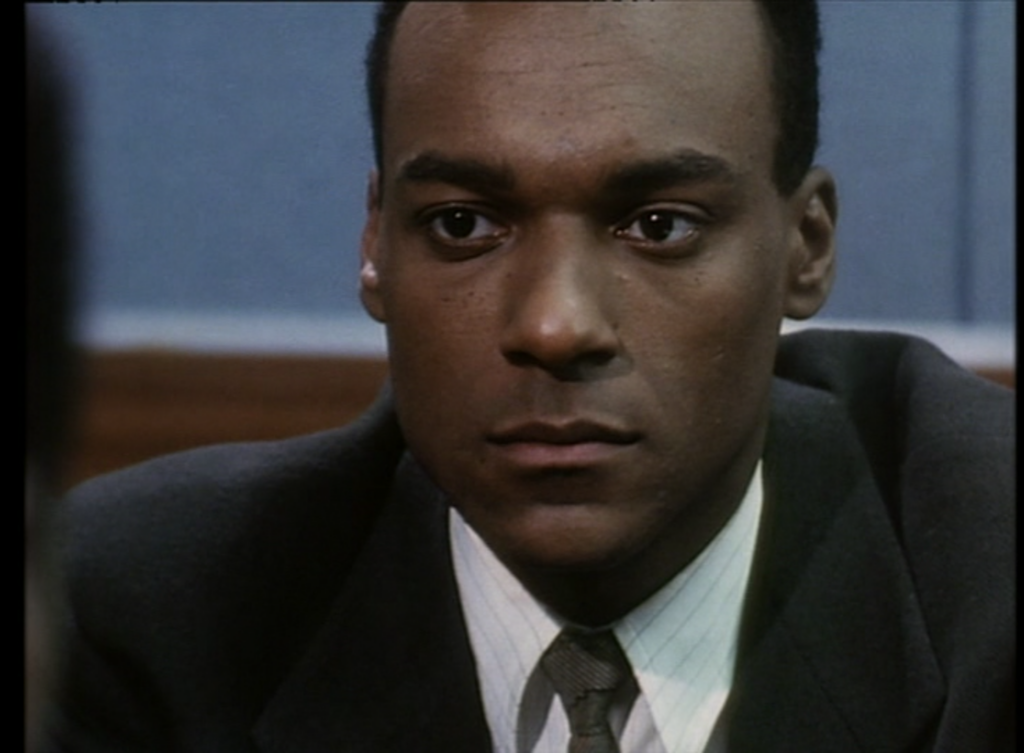
With his direct involvement in the case, Salmon’s role demands much more from him than Tom Wilkinson’s character did in the first series, and he proves to be a fantastic counterpart to Mirren.
The initial scenes place them in an interrogation setting, cleverly portraying it as a demonstration. This setup places them in an adversarial role, showcasing the strength of both actors.
Oswalde isn’t hesitant to push for better assignments, follow leads without Tennison’s approval, or even playfully tease her about her culinary choices*.
As the investigation progresses and takes its toll on them—Tennison almost pleading with her team for results, Oswalde contemplating the repercussions of a critical decision—we witness their vulnerabilities emerge.
However, their pride and ambitions prevent them from fully embracing anything romantically meaningful.
The editors also deserve significant credit for their skillful work. They make the astute choice of cross-cutting between Tennison and Oswalde’s respective breakthroughs in the case, providing viewers with insight into how each detective goes about achieving results.
*Much like Carrie Matheson in Homeland, keeping a well-stocked fridge is very low on Tennison’s list of priorities.
On the legal front, the ensemble cast includes the return of Tennison’s squad, although they remain somewhat indistinct, primarily characterized as a group of generic white male officers.
This lack of individuality can be attributed to the limited time frame they have in the series. With only three and a half hours, the primary focus is understandably on Tennison and Oswalde.
However, the creators do make an effort to infuse some character traits here and there.
More compelling are the members of the Allen family, who owned the house where the victim’s body was discovered and are integral to the story.
George Harris, portraying the family patriarch Vernon Allen, exhibits an amiable demeanor that evolves into startling emotional depth as the plot unfolds.
He takes on a role similar to Ralph Fiennes, challenging Tennison’s stoic facade with a harsh outburst: “Lady, may you rot in hell for this,” during a particularly intense moment.
The Allen children also provide strong contrasts for the detectives. Tony (played by Fraser James) exudes a palpable sense of instability, which clashes with Oswalde’s growing frustrations.
Meanwhile, law student Sarah (portrayed by Jenny Jules) compels Tennison to approach the case from a more cerebral perspective.
It’s fitting that the family plays such a significant role in the investigation, especially considering that Prime Suspect has shifted its focus away* from the institutional sexism that was a defining theme in the first installment.
In this series, set in a predominantly black neighborhood where the murder occurs, the central issue at hand is the deep-seated racism that has permeated the entire relationship between the police and the local residents.
From the outset, the investigation becomes politicized, with both Simone’s disappearance and her cousin’s conviction for the alleged murder of a white man being thrown at the detectives as contentious issues.
Unfortunately, Tennison’s squad does little to alleviate the situation. In particular, Officer Frank Berkin stands out as openly racist, much like DS Oatley was blatantly sexist in the earlier series.
*Downplayed but certainly not gone, as once again Tennison has to deal with some unflattering tabloid publicity and at one point curtly says, “Don’t call me mum” to wrap up a conversation with a fellow officer.
Does the show address the issue of racism as effectively as it did sexism? I would argue that it doesn’t, and it circles back to my earlier point that this second series lacks the subtlety of the original.
In Prime Suspect 1, the focus was on the subtle gestures of characters like Oatley and others undermining Tennison’s authority, with the violence inflicted by Marlow on his female victims symbolizing dehumanizing attitudes.
In contrast, the racial divides in this series are more overt and unapologetic. Berkin makes derogatory remarks about interacting with “those people,” Kernan uses a racial epithet, and Oswalde expresses his frustration on multiple occasions about being the “token black” in the squad.
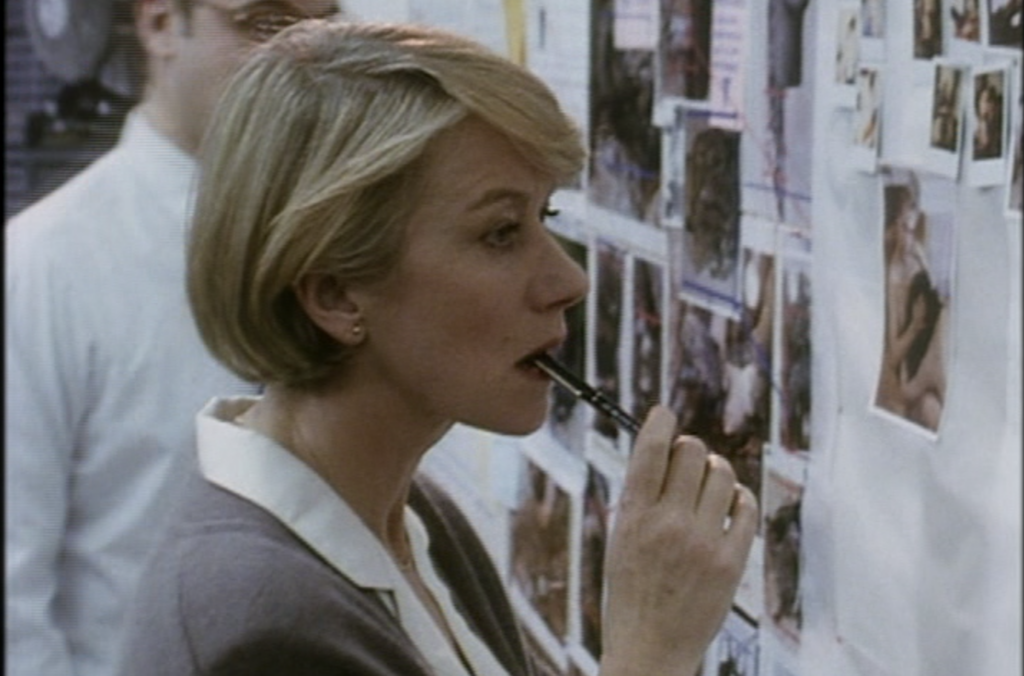
While racism is an unfortunate reality in society, and the show is not as blatant as something like “Crash,” it is undeniably more upfront about conveying its message than the first series.
As I’m quickly coming to expect, Prime Suspect continues to provide those small yet significant moments that reaffirm its value.
One such moment is when Jane Tennison distills the essence of the case with the question: “What difference does it make what color her skin used to be?” In the words of Bunk Moreland, she’s “murder po-lice,” and in Prime Suspect 2, it’s her unwavering tenacity and determination that drive the case to a gratifying resolution.
Is it a more conventional mystery compared to the original? Yes, but it’s also more accessible and, in its unique way, every bit as riveting and compelling.


